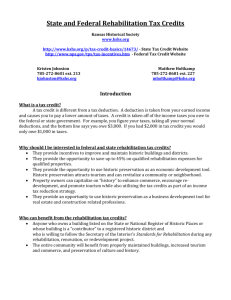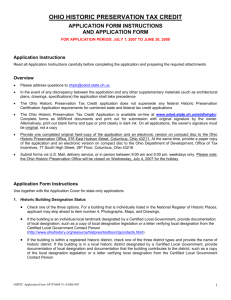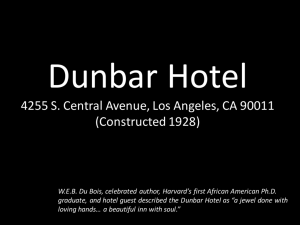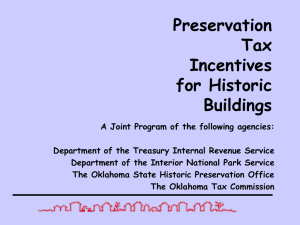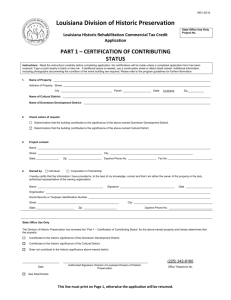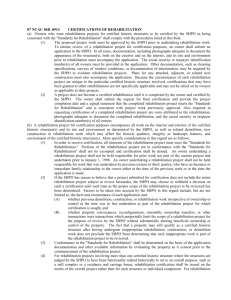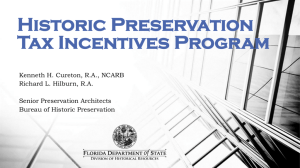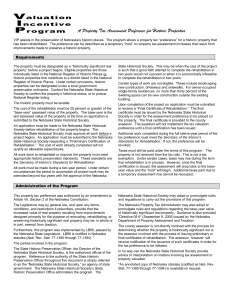014000S04 - University of Kentucky
advertisement
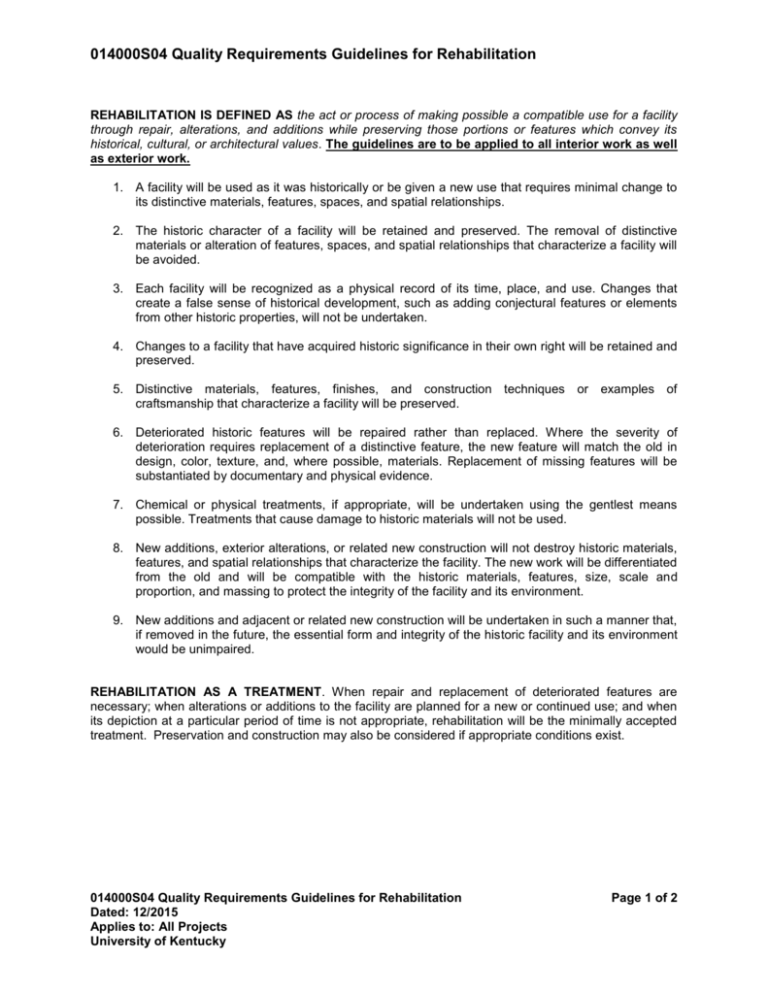
014000S04 Quality Requirements Guidelines for Rehabilitation REHABILITATION IS DEFINED AS the act or process of making possible a compatible use for a facility through repair, alterations, and additions while preserving those portions or features which convey its historical, cultural, or architectural values. The guidelines are to be applied to all interior work as well as exterior work. 1. A facility will be used as it was historically or be given a new use that requires minimal change to its distinctive materials, features, spaces, and spatial relationships. 2. The historic character of a facility will be retained and preserved. The removal of distinctive materials or alteration of features, spaces, and spatial relationships that characterize a facility will be avoided. 3. Each facility will be recognized as a physical record of its time, place, and use. Changes that create a false sense of historical development, such as adding conjectural features or elements from other historic properties, will not be undertaken. 4. Changes to a facility that have acquired historic significance in their own right will be retained and preserved. 5. Distinctive materials, features, finishes, and construction techniques or examples of craftsmanship that characterize a facility will be preserved. 6. Deteriorated historic features will be repaired rather than replaced. Where the severity of deterioration requires replacement of a distinctive feature, the new feature will match the old in design, color, texture, and, where possible, materials. Replacement of missing features will be substantiated by documentary and physical evidence. 7. Chemical or physical treatments, if appropriate, will be undertaken using the gentlest means possible. Treatments that cause damage to historic materials will not be used. 8. New additions, exterior alterations, or related new construction will not destroy historic materials, features, and spatial relationships that characterize the facility. The new work will be differentiated from the old and will be compatible with the historic materials, features, size, scale and proportion, and massing to protect the integrity of the facility and its environment. 9. New additions and adjacent or related new construction will be undertaken in such a manner that, if removed in the future, the essential form and integrity of the historic facility and its environment would be unimpaired. REHABILITATION AS A TREATMENT. When repair and replacement of deteriorated features are necessary; when alterations or additions to the facility are planned for a new or continued use; and when its depiction at a particular period of time is not appropriate, rehabilitation will be the minimally accepted treatment. Preservation and construction may also be considered if appropriate conditions exist. 014000S04 Quality Requirements Guidelines for Rehabilitation Dated: 12/2015 Applies to: All Projects University of Kentucky Page 1 of 2 014000S04 Quality Requirements Guidelines for Rehabilitation Rehabilitation Guidelines Facilities List: 01. 02. 03. 04. 05. 06. 07. 08. 09. 10. 11. 12. 13. 14. 15. 16. 17. 18. 19. 20. 21. 22. 23. 24. 25. 26. 27. 28. 29. 30. 31. 32. 33. 34. 35. 0315 0432 0314 0032 0029 0028 0343 0059 0058 0056 0047 0094 0050 0033 0031 0054 0010 0044 0039 0057 0024 0345 0040 0045 0019 0049 0035 0038 0009 0041 0344 0064 0030 0001 0070 206 East Maxwell Street 226 East Maxwell Street 252 East Maxwell Street Administration Building Alumni Gym Barker Hall Bingham Davis House Bowman Hall Bradley Hall Breckinridge Hall Clarence Wentworth Mathews Building Cooper House Erikson Hall Ezra Gillis Building Frazee Hall Funkhouser Building Hamilton House Kastle Hall King Library Kinkead Hall Lafferty Hall Max Kade German House Maxwell Place McVey Hall Memorial Coliseum Memorial Hall Miller Hall Mining Laboratory Patterson Hall Pence Hall Ray F. Betts House Scovell Hall Student Center Taylor Education Building Wenner Gren Research Lab 014000S04 Quality Requirements Guidelines for Rehabilitation Dated: 12/2015 Applies to: All Projects University of Kentucky Page 2 of 2


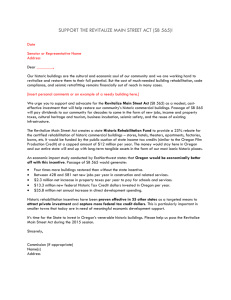

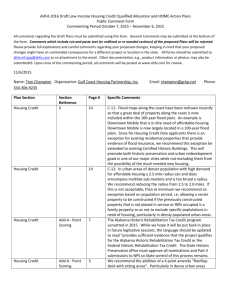





![Summary of the Secretary`s Standards[Icon]](http://s3.studylib.net/store/data/007723350_2-a282a3c35628a71a7284c7fed4edeb94-300x300.png)
